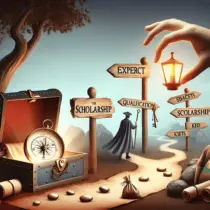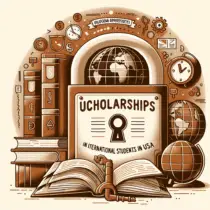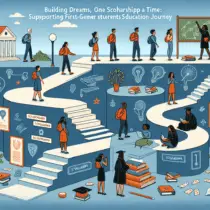Unearthing the Secrets to Securing Scholarships: Expert Tips and Tricks
Introduction:
Securing scholarships for higher education can significantly alleviate the financial burden on students and their families. Scholarships not only provide financial aid but also recognize academic achievements and support students in pursuing their educational goals. However, the process of applying for scholarships can be competitive and overwhelming. To help students navigate this challenging terrain, this article unearths expert tips and tricks to maximize your chances of securing scholarships.
The Importance of Research:
Researching available scholarships is the first step towards a successful scholarship application journey. Begin by exploring various avenues like institutional scholarships offered by universities or colleges, private organizations, government programs or grants, and even international scholarship opportunities. Each type of scholarship may have distinct eligibility criteria, so it’s crucial to thoroughly understand the requirements before applying.
When researching, utilize reliable online platforms dedicated to connecting students with scholarship opportunities. Websites like Fastweb, Scholarships.com, and College Board’s Big Future Scholarship Search provide comprehensive databases that cater to diverse academic fields, minority groups, specific regions, or even unique talents or extracurricular activities.
Developing an Impressive Resume:
Crafting a well-rounded resume is essential for catching the attention of scholarship providers. Highlight your academic achievements and extracurricular involvements such as leadership roles in clubs or organizations, community service initiatives, sports accomplishments, or creative endeavors. Be sure to quantify your accomplishments whenever possible using numbers or percentages to showcase your impact.
Furthermore, don’t overlook any work experiences or internships that relate to your desired field of study as they may add an extra layer of credibility to your application. Volunteering experiences that demonstrate dedication towards helping others can also enhance your resume. Remember that quality trumps quantity when it comes to extracurricular involvement – focus on showcasing a few meaningful engagements rather than listing numerous superficial ones.
Writing an Outstanding Personal Statement:
A compelling personal statement can significantly strengthen your scholarship application. Use this opportunity to share your story, aspirations, and how receiving the scholarship will impact your life and educational journey. Avoid generic or repetitive statements and instead focus on making a memorable impression.
Start by identifying a central theme or message that resonates with you, then weave together your experiences, passions, and goals to create a cohesive narrative. Reflect on challenges you’ve overcome, personal growth you’ve experienced, or instances where you’ve made a positive impact in your community or beyond. Don’t be afraid to add an element of vulnerability to make your personal statement more authentic and relatable.
Securing Strong Letters of Recommendation:
Letters of recommendation play a vital role in showcasing your character, abilities, and potential to scholarship providers. Choose individuals who know you well academically, professionally, or personally, such as teachers, mentors, coaches, or employers. Ensure that they can speak positively about your skills and achievements.
When requesting letters of recommendation, provide your recommenders with specific details about the scholarship(s) you are applying for. Share any relevant information about yourself that can guide them in highlighting the qualities and experiences most relevant to the scholarship criteria.
Applying Early and Organizing Deadlines:
Procrastination is the enemy when it comes to securing scholarships. Many scholarships have limited spots available and early applications are often favored. Therefore, it’s crucial to stay organized and create a timeline for researching scholarships’ application deadlines.
Utilize electronic calendars or online tools specifically designed for managing college applications to help keep track of deadlines effectively. Breaking down the application process into manageable tasks will ensure you have enough time for each component without feeling overwhelmed.
FAQ
1. What are some additional resources for finding scholarships?
– In addition to online platforms mentioned earlier (Fastweb,
Scholarships.com), consider checking out local resources such as
community foundations or nonprofit organizations that may offer
scholarships exclusive to your region or city.
2. How important are grades for securing scholarships?
– While high academic achievements are highly valued by many
scholarship providers, it’s not the sole determining factor. Some
scholarships may prioritize other aspects such as leadership
potential, community involvement, or specific talents.
3. Can international students apply for scholarships?
– Yes, many scholarships are available to international students.
However, it’s crucial to carefully review the eligibility criteria of each
scholarship provider, as some may be exclusively available to U.S.
citizens or residents.
4. Is it possible to apply for multiple scholarships simultaneously?
– Absolutely! In fact, applying for multiple scholarships can increase
your chances of securing financial aid. However, ensure that you
carefully manage your time and tailor each application to meet the
specific requirements of each scholarship.
5. Are there any scholarships specifically for graduate or doctoral students?
– Yes, there are numerous scholarships available exclusively for
graduate and doctoral students. Research professional associations,
foundations, government-funded programs, and university-specific
opportunities that cater to higher education levels beyond
undergraduate studies.






